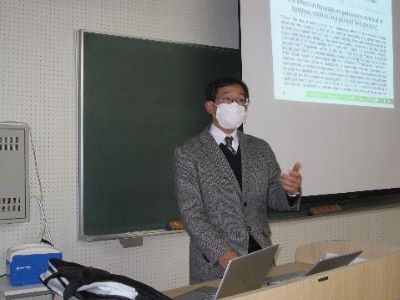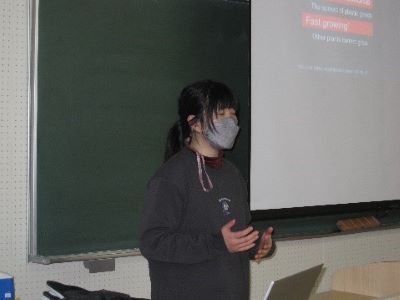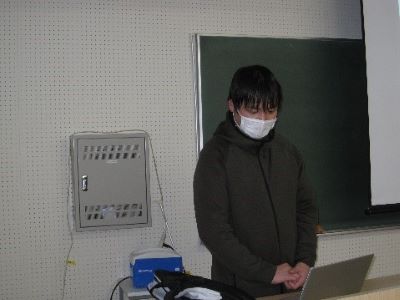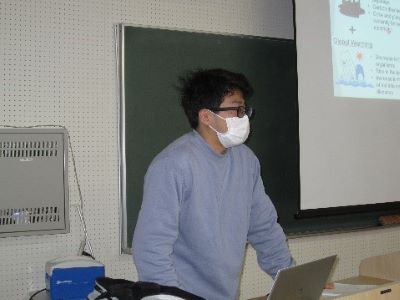HOSTY Association (Graduate School of Advanced Science and Engineering)
Email: bprc*hiroshima-u.ac.jp (Please replace*with @)
Date & Time: Thursday January 13, 2022 16:20-17:50
Place: Engineering 110 Lecture Room, Higashi-Hiroshima Campus, Hiroshima University
Program
Chair & Commentary: Yukihiko MATSUMURA
Professor, Graduate School of Advanced Science and Engineering, Hiroshima University

Lecture: Supasuta PIBOONLAPUDOM
M2 student, Graduate School of Advanced Science and Engineering, Hiroshima University
“The effect of flowrate on potassium removal of bamboo residue in a packed bed reactor”
Today, the use of bamboo has been attracting attetions as alternative energy resource for producing biofuel as well as mitigating the greenhouse gas emission compared to fossil fuels., especially in Japan where bamboo grows in large quantities and destroys the plant ecosystem. However, it contains a high concentration of alkali metals and alkali earth metals e.g. potassium, sodium, magnesium component which is the main ash forming minerals leading to slagging and fouling problems in heat exchanger during the combustion process. This study aims to investigate the characteristic of potassium removal in bamboo biomass which is considered a remarkable way for minimizing ash components with less energy consumption. The methanol was taken as leaching solvent in a packed bed reactor at the ambient temperature (20oC) and pressure condition for 30 minutes of washing time. The experiment was carried out with methanol leaching flowrate as a factor. In this study, the methanol leaching of bamboo will be described, and the effect of methanol flowrate will be prospected.

Lecture: Kenshu NAGATOMI
M1 student, Graduate School of Advanced Science and Engineering, Hiroshima University
“Effect of reaction temperature and time on the yield of hydrothermal carbonization”
One of the ways to use biomass is to generate fuel by hydrothermal carbonization. Hydrothermal carbonization refers to the heat treatment of biomass under high temperature and high-pressure water conditions to obtain the solid called hydrochar and liquid. In order to clarify the reaction behavior of the water-based part of biomass, glucose was treated under high temperature and high pressure in a batch reactor. The reaction temperature and reaction time were varied. The substances produced by the decomposition of glucose were predicted and their concentrations were investigated.

Lecture: Shinnosuke MIYASAKO
M2 student, Graduate School of Advanced Science and Engineering, Hiroshima University
“Behavior of each organophosphorus and phosphorus mixture under hydrothermal treatment”
Phosphorus is one of the three elements of fertilizer. It affects flowering and fruiting of plants and is mainly produced from phosphorus rock. However, it has problems of depletion and uneven distribution. Therefore, it is necessary to recover phosphorus from other resources. Therefore, Biomass is expected to be a new resource. Sewage Sludge, which belongs to the waste biomass, contains a large amount of organic phosphorus, and has a stable emission. However, organic phosphorus in Sewage Sludge cannot be absorbed by plants through their roots. Therefore, it is necessary to degrade it to phosphate ion through Hydrothermal treatment. For practical application, it is necessary to reveal the mineralization mechanism of Sewage Sludge. However, it is difficult to accurately reveal the mineralization mechanism because it contains various types of organic phosphorus (such as Deoxyribonucleic acid (DNA), Adenosine triphosphate (ATP), and phospholipids). Therefore, in this study, we aimed to confirm the mineralization of DNA, ATP, and phospholipids respectively. In addition, we also studied the mineralization of feedstock which contains those.

Lecture: Yuito SUGANUMA
M1 student, Graduate School of Advanced Science and Engineering, Hiroshima University
“Ammonia production from highly reactive nitrogen in poultry litter”
Biomass, including livestock excrement, is increasingly being used for energy. Livestock excrement causes problems of air and water pollution. For this reason, the technology of methane fermentation is often used in order to treat it properly and make effective use of it. However, in methane fermentation, the nitrogenous components of the biomass form ammonium ion, which inhibits the reaction. In order to avoid this problem, we have succeeded in using hydrothermal pretreatment to convert nitrogenous components into ammonium ion before methane fermentation, which are then recovered as ammonia. We have also investigated the reaction rate of nitrogen components in poultry litter.


 Home
Home














